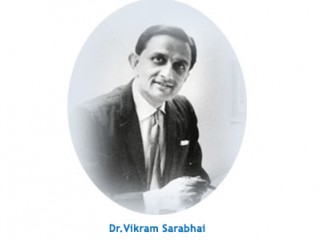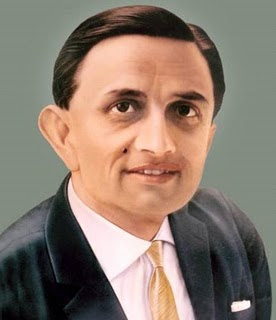skip to main |
skip to sidebar


Born: September 15, 1860
Died: April 14, 1962
Achievements: Architect of Krishnarajasagar Dam; devised steel doors to stop the wasteful flow of water in dams; honored with Bharat Ratna.
Sir Mokshagundam Visvesvaraya was an eminent engineer and statesman and played a key role in building of modern India.
Sir M. Visvesvaraya was born on September 15, 1860 in Muddenahalli village in the Kolar district of the erstwhile princely state of Mysore (present day Karnataka). His father Srinivasa Sastry was a Sanskrit scholar and Ayurvedic practitioner. His mother Venkachamma was a religious lady. He lost his father when he was only 15 years old.
Visvesvaraya completed his early education in Chikkaballapur and then went to Bangalore for higher education. He cleared his B.A. Examination in 1881. He got some assistance from the Government of Mysore and joined the Science College in Poona to study Engineering. In 1883 he ranked first in the L.C.E. and the F.C.E. Examinations (equivalent to B.E. Examination of today).
When Sir M. Visvesvaraya cleared his engineering, Government of Bombay offered him a job and appointed him Assistant Engineer at Nasik. As an engineer, he achieved some marvelous feats. He planned a way of supplying water from the river Sindhu to a town called Sukkur. He devised a new irrigation system called the Block System. He devised steel doors to stop the wasteful flow of water in dams. He was the architect of the Krishnaraja Sagara dam in Mysore. The list is endless.
Sir M. Visvesvaraya lead a very simple life. He was a strict vegetarian and a teetotaler. He was known for his honesty and integrity. In 1912, Maharaja of Mysore appointed Visvesvaraya as his Dewan. Before accepting the position of Dewan of Mysore, he invited all his relatives for dinner. He told them very clearly that he would accept the prestigious office on the condition that none of them would approach him for favours. As Dewan of Mysore, he worked tirelessly for educational and industrial development of the state. When he was the Dewan many new industries came up. The Sandal Oil Factory, the Soap Factory, the Metals Factory, the Chrome Tanning Factory , were some of them. Of the many factories he started the most important is the Bhadravati Iron and Steel Works.
Sir M. Visvesvaraya voluntarily retired as Dewan of Mysore in 1918. He worked actively even after his retirement. Sir M. Visvesvaraya was honored with Bharat Ratna in 1955 for his invaluable contribution to the nation. When he reached the age of 100, the Government of India brought out a stamp in his honor. Sir Visvesvaraya passed away on April 14, 1962 at the age of 101.
Friendships in Pune with G.K. Gokhale, the political leader and M.G. Ranade, the nationalist economist, had had a formative impact on Sir MV's ideas of economic development. Besides “Reconstructing India” (1920) and a pioneer text on state planning, “Planned Economy of India” (1934), Sir MV published numerous short books on issues like village industrialisation, nation building, and unemployment. His writings are silent on India's historical experience or culture. Culture usually surfaces in his writings as a technical problem in his scheme of achieving progress. In 1915, he observed that “supplanting the spiritual ideals of the country” was of paramount importance. Two years earlier, he had nodded at Montesquieu's spurious ideas about climatic effects on human nature: “In our warm climate, we have not got the same incentive to exertion and we may never be able to attain the same level of prosperity as Western people.” Many early 20th Century Kannada literary figures have written eulogistic poems about Sir MV. Their admiration for him, however, seems to rest less on an engagement with his thought than on trust in the purity of his intentions. He acquired popular fame as a person who strove selflessly to develop the country and make it modern.
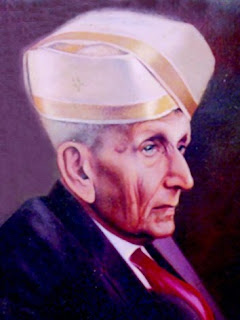
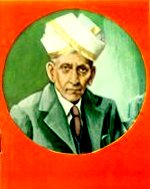
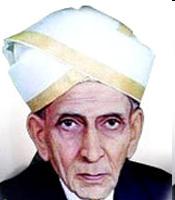

 Satyendranath Bose was born on January 1, 1894 in Calcutta. His father Surendranath Bose was employed in the Engineering Department of the East India Railway. Satyendranath was the eldest of his seven children.
Satyendranath Bose was born on January 1, 1894 in Calcutta. His father Surendranath Bose was employed in the Engineering Department of the East India Railway. Satyendranath was the eldest of his seven children.
Satyendra Nath Bose had his schooling from Hindu High School in Calcutta. He was a brilliant student. He passed the ISc in 1911 from the Presidency College, Calcutta securing the first position. Satyendra Nath Bose did his BSc in Mathematics from the Presidency College in 1913 and MSc in Mixed Mathematics in 1915 from the same college. He topped the university in BSc. and MSc. Exams.
Sateyendra nath Bose began his education at an elementary school and after that he attended Hindu High School in Calcutta. Later on he joined Presidency College in Calcutta in 1909 where he had a brilliant academic record. He was awarded a B.Sc. in 1913 and M.Sc. in 1915 proving him to be by far the best student of mathematics. In the same year he married with Ushabala Ghose. They had five children, three daughters and two sons.
He started his career in 1916 as lecturer in the physics department of Calcutta University. He served here from 1916 to 1921 and Later on he joined Dacca University again as lecturer. In 1926, he became a professor and was made head of the physics department, and continued teaching at Dacca University until 1945. At that time, he returned to Calcutta, and taught at Calcutta University until 1956, when he retired and was made professor emeritus.
In 1956, when he was retired from Calcutta University he was appointed as vice chancellor of Viswa-Bharati University, Shantiniketan. After two year he was honoured with the post of national professor. He was awarded India's second highest civilian award, the Padma Vibhushan in 1954 by Government of India. He left for heavenly abode on 4 February 1974.

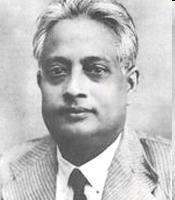

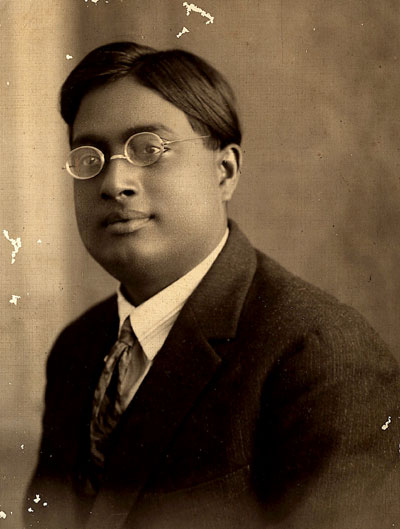
 Subrahmanyan Chandrasekhar was born on October 19, 1910 in Lahore. His father, Chandrasekhara Subrahmanya Ayyar was an officer in Government Service in the Indian Audits and Accounts Department. His mother Sita was a woman of high intellectual attainments. C.V. Raman, the first Indian to get Nobel Prize in science was the younger brother of Chandrasekhar's father. Till the age of 12, Subramanyan Chandrasekhar had his education at home under his parents and private tutors. In 1922, at the age of 12, he attended the Hindu High School. He joined the Madras Presidency College in 1925. Subrahmanyan Chandrashekhar passed his Bachelor's degree, B.Sc. (Hon.), in physics in June 1930. In July 1930, he was awarded a Government of India scholarship for graduate studies in Cambridge, England.
Subrahmanyan Chandrasekhar was born on October 19, 1910 in Lahore. His father, Chandrasekhara Subrahmanya Ayyar was an officer in Government Service in the Indian Audits and Accounts Department. His mother Sita was a woman of high intellectual attainments. C.V. Raman, the first Indian to get Nobel Prize in science was the younger brother of Chandrasekhar's father. Till the age of 12, Subramanyan Chandrasekhar had his education at home under his parents and private tutors. In 1922, at the age of 12, he attended the Hindu High School. He joined the Madras Presidency College in 1925. Subrahmanyan Chandrashekhar passed his Bachelor's degree, B.Sc. (Hon.), in physics in June 1930. In July 1930, he was awarded a Government of India scholarship for graduate studies in Cambridge, England.
His early education, till he was twelve, was at home by his parents and by private tuition. In 1918, his father was transferred to Madras where the family was permanently established at that time.
In Madras, he attended the Hindu High School, Triplicane, during the years 1922 - 25. His university education (1925 - 30) was at the Presidency College. He took his bachelor's degree, B. Sc. (Hon.), in physics in June 1930. In July of that year, he was awarded a Government of India scholarship for graduate studies in Cambridge, England. In Cambridge, he became a research student under the supervision of Professor R. H. Fowler (who was also responsible for my admission to Trinity College). On the advice of Professor P. A. M. Dirac, he spent the third of my three undergraduate years at the Institut för Teoretisk Fysik in Copenhagen.
He took his Ph.D. degree at Cambridge in the summer of 1933. In the following October, he was elected to a Prize Fellowship at Trinity College for the period 1933 - 37. During his Fellowship years at Trinity, he formed lasting friendships with several, including Sir Arthur Eddington and Professor E. A. Milne.
While on a short visit to Harvard University (in Cambridge, Massachusetts), at the invitation of the then Director, Dr. Harlow Shapley, during the winter months (January-March) of 1936, he was offered a position as a Research Associate at the University of Chicago by Dr. Otto Struve and President Robert Maynard Hutchins. He joined the faculty of theUniversity of Chicago in January 1937. And he have remained at this University ever since.
During his last two years (1928 - 30) at the Presidency College in Madras, he formed a friendship with Lalitha Doraiswamy, one year his junior. This friendship matured; and they were married (in India) in September 1936 prior to his joining the University of Chicago. In the sharing of their lives during the past forty-seven years, Lalitha's patient understanding, support, and encouragement have been the central facts of his life.
After the early preparatory years, his scientific work has followed a certain pattern motivated, principally, by a quest after perspectives. In practise, this quest has consisted in his choosing (after some trials and tribulations) a certain area which appears amenable to cultivation and compatible with my taste, abilities, and temperament. And when after some years of study, he feel that he have accumulated a sufficient body of knowledge and achieved a view of his own, he have the urge to present his point of view, ab initio, in a coherent account with order, form, and structure.
There have been seven such periods in his life: stellar structure, including the theory of white dwarfs (1929 - 1939); stellar dynamics, including the theory of Brownian motion (1938 - 1943); the theory of radiative transfer, including the theory of stellar atmospheres and the quantum theory of the negative ion of hydrogen and the theory of planetary atmospheres, including the theory of the illumination and the polarization of the sunlit sky (1943 - 1950); hydrodynamic and hydromagnetic stability, including the theory of the Rayleigh-Bernard convection (1952 - 1961); the equilibrium and the stability of ellipsoidal figures of equilibrium, partly in collaboration with Norman R. Lebovitz (1961 - 1968); the general theory of relativity and relativistic astrophysics (1962 - 1971); and the mathematical theory of black holes (1974 - 1983).
Dr Chandrasekhar died in 1995.
Subrahmanyan Chandrasekhar was one of the greatest scientists of the 20th century. He did commendable work in astrophysics, physics and applied mathematics. Chandrasekhar was awarded the Nobel Prize in Physics in 1983.
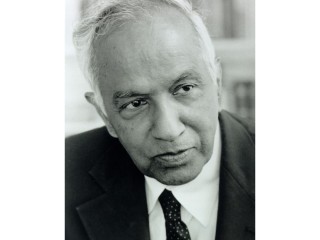
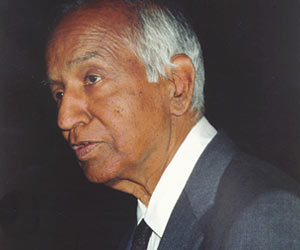


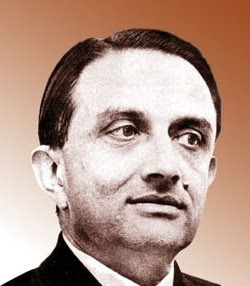
Vikram Sarabhai was born on August 12, 1919 at Ahmedabad, Gujarat to Shri Ambalal Sarabhai and Smt. Sarladevi Sarabhai, in a family of Industrialists. His father Ambalal Sarabhai was an affluent industrialist and owned many mills in Gujarat. Vikram Sarabhai was one of the eight children of Ambalal and Sarla Devi. He had his early education in a private school. Here atmosphere injected into the young by the seeds of scientific curiosity, ingenuity and creativity. From this school he proceeded to Cambridge for his college education and took the tripods degree from St. John’s College in 1940. When World War II began, he returned home and joined as a research scholar under Sir C.V. Raman at the IISc IISc, Bangalore. In September, 1942 Vikram Sarabhai married Mrinalini Sarabhai who was a celebrated classical dancer of India. The wedding was held in Chennai without anyone from Vikram’s side of the family attending the wedding ceremony because of the ongoing Quit India movement led by Mahatma Gandhi. Vikram and Mrinalini had two children – Kartikeya and Mallika. Mallika Sarabhai is a renowned dancer.
He started his work on cosmic rays and built the necessary equipment with which he took measurements. He returned to Cambridge in 1945. In 1947 he was awarded the Ph. D. degree. The physical Research Laboratory (PRL) was established in November 1947 in a few rooms in M.G. Science Institute of the Ahmedabad Education Society, which was founded by his parents. Subsequently, it got support from the Council of Scientific and Industrial Research (CSIR) and the Department of Atomic Energy.
His interest in solar Physics and cosmic rays led him to set up many observation stations around the country. Vikram Sarabhai established centers for scientific research in several places of India. He was instrumental in establishing the physical Research Laboratory (PRL) in Ahmedabad. In this, he formed the ‘Group for the Improvement of Science Education’, in 1963. In the same year, he established the Nehru Foundation for Development, for the study of social and education problems.
In 1966, under its auspices, he established the Community Science Center, whose object was to spread scientific knowledge, to create interest in science and to promote experimentation among students, teachers and the general public. After the sudden death of Dr. Sarabhai in 1971, the then Prime Minister of India, Smt. Indira Gandhi, renamed the Centre as the Vikram A. Sarabhai Community Science Centre, to associate its name with that of its founder. To train efficient managers of factories, he started the Indian Institute of Management (IIM) at Ahmedabad. Of all the institutions, he established the most important were the ‘Indian Space Research Organization’ with Centers at Thumba, Ahmedabad, Shriharikota and Arvi. He established Rocket Launching Stations at Thumba and Shrihatikota. Along with his work on the science front, he took utmost interest and managed family business of Textiles and Pharmaceuticals.
With active support from Homi Bhabha, Vikram Sarabhai, set up the first Rocket Launching station (TERLS) in the country at Thumba near Thiruvananthapuram on the Arabian Coast, as Thumba is very close to the Equator. The first rocket with sodium vapour payload was launched on November 21, 1963. In 1965, the UN General Assembly gave recognition to TERLS as an international facility.
After the sudden death of Homi Bhabha in an air crash, Vikram Sarabhai was appointed Chairman, Atomic Energy Commission in May 1966. He wanted the practical application of science to reach the common man. He decided to acquire competence in advance technology for the solution of country’s problems based on technical and economic evaluation of its real resources. He initiated India’s space programme, which today is renowned all over the world.
Dr. Vikram Sarabhai was awarded with Shanti Swarup Bhatnagar Medal in 1962 and Padma Bhushan in 1966. Vikram Sarabhai passed away in his sleep on December 31,1971.

